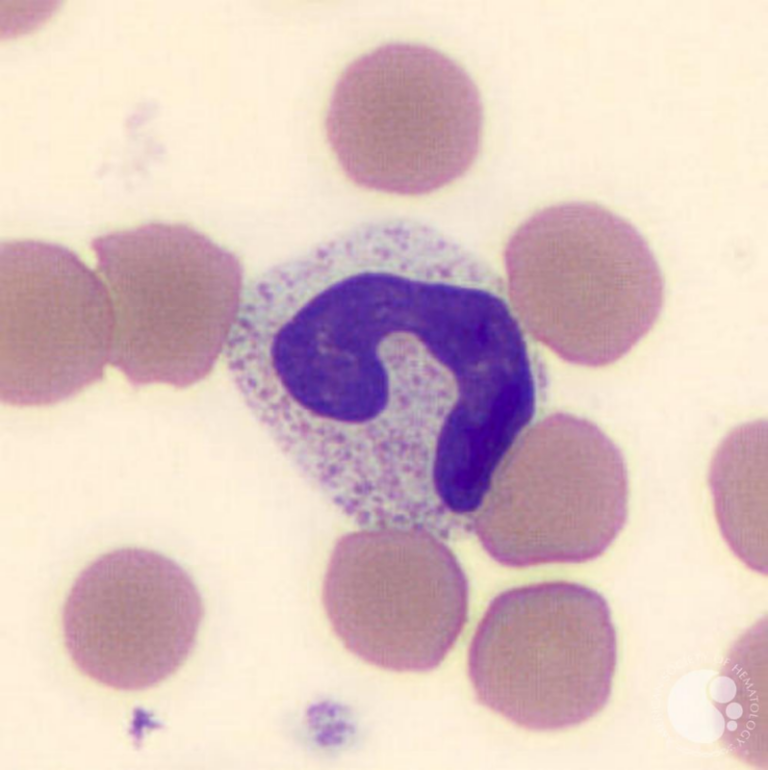As emergency department physicians, the CBC is one of the most routine labs that we order without any second thought. Most of us likely don’t think too much about ordering the CBC with or without a differential (or probably just click the default), but I’d like to offer at least one reason you should not only order a CBC with “diff” on your patients, but actually look at it and interpret it: “bandemia”.
I remember hearing the term “bandemia” as a new intern and having no idea what that meant or why it was significant. Before diving into that, let’s just clarify some similar terms you may or may not be familiar with.
The “Left Shift” (aka “Bandemia” before it was cool)

This is a term you may have heard during patient presentations, hand-offs, or in any other discussion about a patient’s lab results. Interestingly, the term originates from how cells in a CBC were manually counted and differentiated from each other under a microscope. Prior to modern times where a machine can automatically do this process, a pathologist would use a handheld machine to count and differentiate cells from each other, with the left side of the machine having the keys for the more immature cells. Although it is commonly mistaken, the term “left shift” actually refers to a higher than expected percentage of immature neutrophils and not an elevated neutrophil count or a neutrophilic predominance.
What are Band Cells and Why Should I Care?

As you recall from medical school, neutrophils are our immune system’s primary cellular responder to inflammation (and by extension, infection). Band cells are immature neutrophils that are on their way to becoming fully mature neutrophils, but are not typically seen in the bloodstream as they normally complete their development to mature neutrophils in the bone marrow before being pushed out to the rest of the body. Put simply, seeing a larger-than-expected amount of band cells on a CBC means that the body may be “pushing out” our anti-inflammatory cells as early as possible in response to a potentially devastating infection. Recent studies have suggested that an elevated band cell percentage on a CBC (aka “bandemia”) is concerning for a systemic infection, even in the absence of fever or leukocytosis.
Show Me The Evidence
A 2010 post hoc analysis of a prospective, observational, cohort study aimed to quantify the ability of abnormal temperature, white blood cell count, and “bandemia” (defined as >5% total bands) to identify bacteremia in ED patients with a suspected infection.
- Abnormal temperature (hypo/hyperthermia) had a sensitivity of 67% for culture proven bacteremia
- Abnormal WBC count had a sensitivity of 48% for culture proven bacteremia
- “Bandemia” had a sensitivity of 82% for culture proven bacteremia
- In patients with bacteremia and hypotension or septic shock, 33% had normal temperature and 21% had normal WBC count on initial evaluation
A 2012 retrospective cohort study of ~2,300 patients who had a CBC with differential drawn at admission concluded that even with a normal WBC count, patients with moderate and high “bandemia” on admission (11-19% and >20% respectively) had significantly increased odds of having positive blood cultures and of in-hospital mortality.
Lastly, a 2015 retrospective study of patients who initially presented to the ED with “bandemia” (>10%) and were subsequently discharged from the ED suggested that bandemia (especially >20% bands) is associated with greater likelihood of negative clinical outcomes, including return to the ED within 30 days and 30-day mortality.
Conclusion
Although we have plenty of things to keep us busy in the ED, I would encourage you to take just an extra second to review the CBC differential that you probably ordered and interpret what that may mean for your patient. Even in someone that may be clinically well-appearing without other objective signs of infection, a “bandemia” should make you do a double-take a think about what you could be missing that’s making this person’s immune system react so strongly.
References
- Seigel TA, Cocchi MN, Salciccioli J, Shapiro NI, Howell M, Tang A, Donnino MW. Inadequacy of temperature and white blood cell count in predicting bacteremia in patients with suspected infection. J Emerg Med. 2012 Mar;42(3):254-9. doi: 10.1016/j.jemermed.2010.05.038. Epub 2010 Jul 31. PMID: 20674238.
- Drees M, Kanapathippillai N, Zubrow MT. Bandemia with normal white blood cell counts associated with infection. Am J Med. 2012 Nov;125(11):1124.e9-1124.e15. doi: 10.1016/j.amjmed.2012.04.039. Epub 2012 Aug 28. PMID: 22939096.
- Shi E, Vilke GM, Coyne CJ, Oyama LC, Castillo EM. Clinical outcomes of ED patients with bandemia. Am J Emerg Med. 2015 Jul;33(7):876-81. doi: 10.1016/j.ajem.2015.03.035. Epub 2015 Mar 18. PMID: 25937377.

